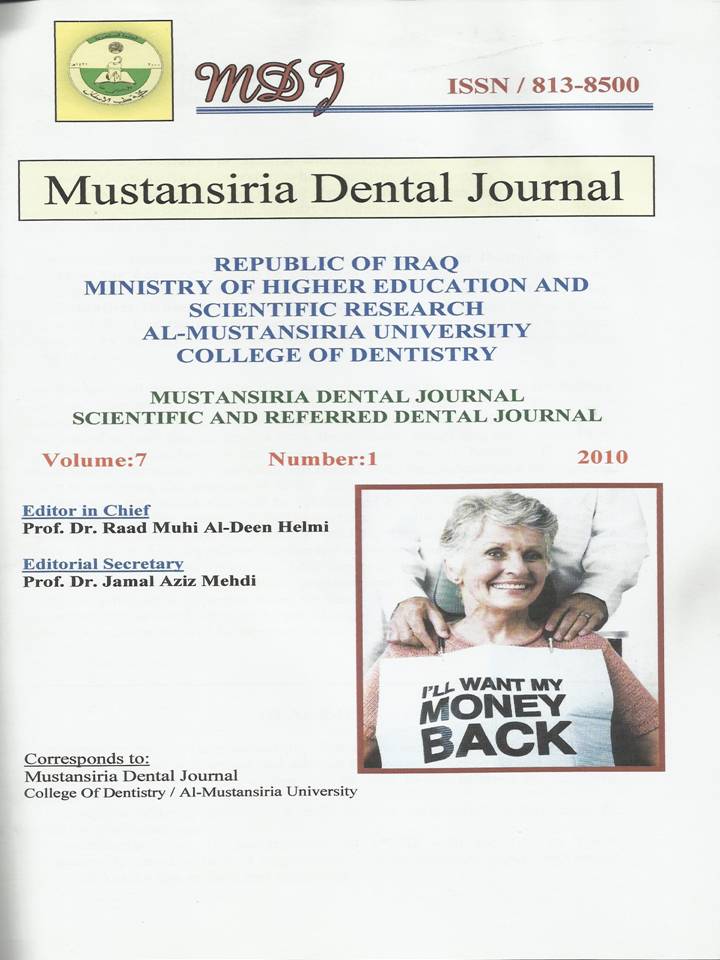Evaluation the Effect of Different Instrumentation& Obturation Techniques on the Apical Sealing Using Two Types of Sealers
DOI:
https://doi.org/10.32828/mdj.v7i1.357Abstract
There is controversy as to which instrumentation &/or obturation techniques to
choose with which type of sealer give better apical sealing. This in vitro study aimed
to evaluate the apical sealing ability of three obturation techniques and two types of
sealer.
A total of 120 teeth were randomly divided into two groups; roots prepared using
step-back and hybrid techniques. Each group of instrumented roots were subdivided
randomly into three obturation groups of 20 roots for each; each one of these
obturation techniques were used twice; once with ZOE sealer and other with AH26
sealer. Then dye penetration study conducted & samples were examined under the
stereomicroscope. Data had been collected from two independent examiners and
statistically analyzed using student t-test.
Concerning the obturation techniques, warm vertical compaction showed best
apical sealing. Regarding sealers, AH 26 sealer had better sealing ability than ZOE
sealer with highly significant difference.
Warm vertical compaction obturation technique in combination with the AH 26
resin sealer obturates the canals with lesser apical leakage.

Downloads
Published
Issue
Section
License
The Journal of Mustansiria Dental Journal is an open-access journal that all contents are free of charge. Articles of this journal are licensed under the terms of the Creative Commons Attribution International Public License CC-BY 4.0 (https://creativecommons.org/licenses/by/4.0/legalcode) that licensees are unrestrictly allowed to search, download, share, distribute, print, or link to the full texts of the articles, crawl them for indexing and reproduce any medium of the articles provided that they give the author(s) proper credits (citation). The journal allows the author(s) to retain the copyright of their published article.
Creative Commons-Attribution (BY)








